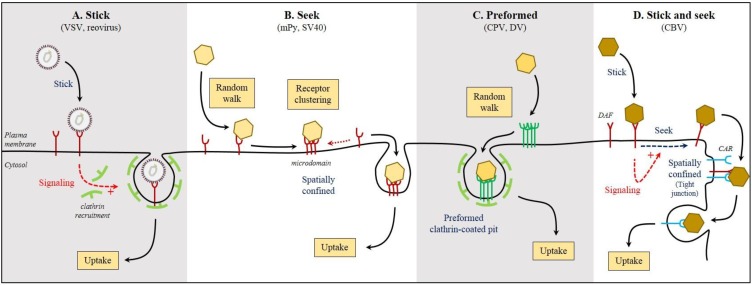Figure 2.
How viruses find their receptor(s). Viruses have evolved different strategies to interact with their receptor(s) at the surface of host cells. (A) After landing on the cell surface and binding to receptor(s), some viruses remain stick at a confined location from where they will be endocytosed in a passive or signal-induced manner; (B) Others, after binding to their receptor, will diffuse at the cell surface seeking additional receptor molecules. The virus/receptor complex will be then spatially confined in a host plasma membrane microdomain from where it will be endocytosed; (C) Some viruses, following binding to their receptors, diffuse at the surface of the host cell seeking for preformed endocytic structures that they hijack to mediate their internalization; (D) Viruses can land on the surface of the cells and bind to a primary receptor. This initial binding induces signaling that leads to active redistribution of the virus/primary receptor complex seeking for a secondary receptor that mediates virus uptake. Abbreviations: CAR, coxsackievirus and adenovirus receptor; CBV, group B coxsackievirus; CPV, canine parvovirus; DAF, CBV co-receptor; DV, dengue virus; mPy, mouse Polyomavirus; SV40, simian polyomavirus 40; VSV, vesicular stomatitis virus.

